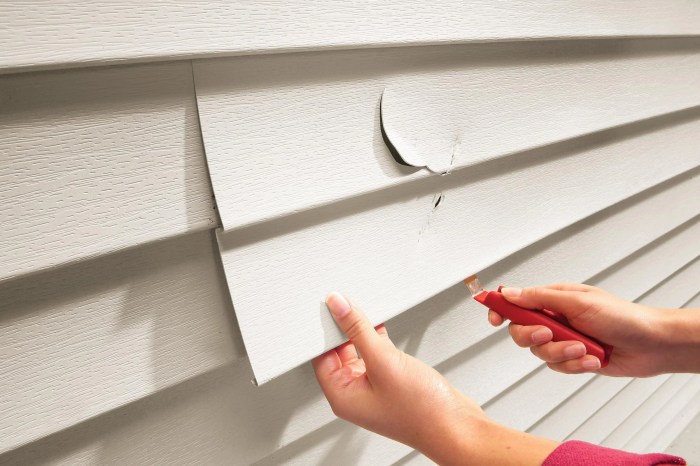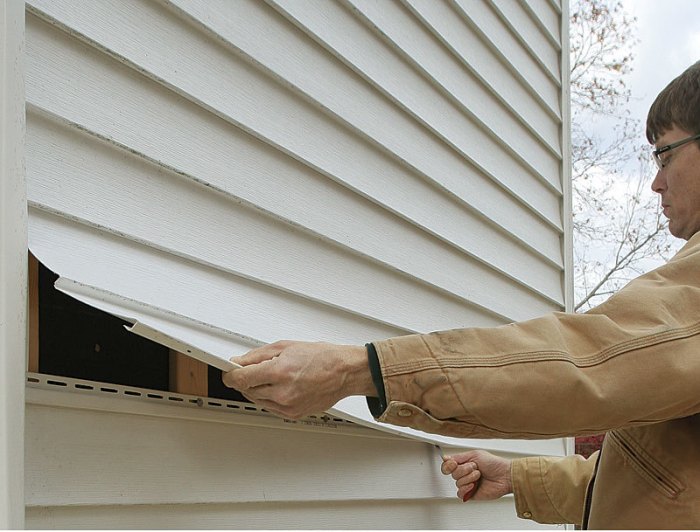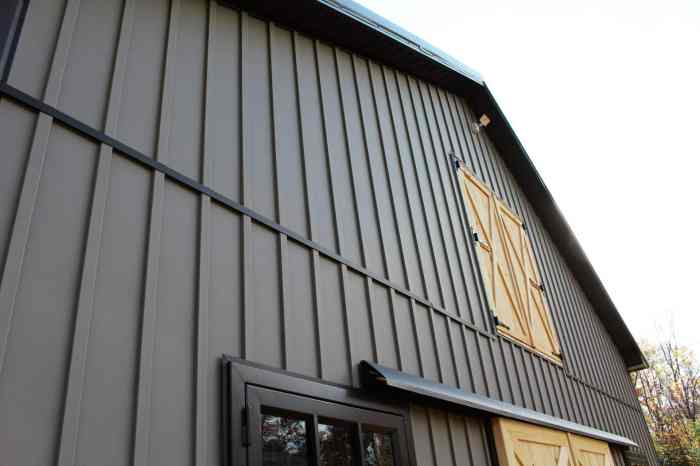PVC Stone Panels: A Comprehensive Guide
Introduction to PVC Stone Panels
PVC stone panels, also known as PVC cladding or composite stone panels, are a popular building material offering a blend of aesthetics and practicality. They combine the durability and water resistance of PVC with the attractive appearance of natural stone, providing a versatile solution for various architectural applications.The manufacturing process involves several key steps.
First, a mixture of PVC resin, fillers (such as calcium carbonate), and additives (for color, UV resistance, and other properties) is created. This mixture is then extruded into sheets or panels of the desired thickness and size. The surface is often treated to mimic the texture and appearance of different stone types, sometimes incorporating a protective coating for enhanced durability and weather resistance.
Finally, the panels are cut to size and are often ready for installation. This process results in a lightweight yet robust material suitable for both interior and exterior use.
Types of PVC Stone Panels
The market offers a diverse range of PVC stone panels, categorized primarily by their surface texture and color. These variations cater to a wide array of design preferences and architectural styles. For example, panels can mimic the look of marble, granite, sandstone, or even wood, offering significant design flexibility.
Different finishes are also available, including matte, gloss, and textured surfaces, allowing for a customized aesthetic. Furthermore, the color palette is extensive, ranging from classic neutrals to vibrant hues, enabling architects and homeowners to achieve specific visual effects.
The choice depends on the desired aesthetic, budget, and specific project requirements.
Comparison with Other Building Materials
PVC stone panels offer several advantages compared to other materials. Unlike natural stone, which can be heavy, expensive, and prone to cracking, PVC stone panels are lightweight, relatively inexpensive, and highly resistant to damage. Compared to ceramic tiles, PVC stone panels are often easier and faster to install, requiring less specialized labor.
While natural stone provides a unique and luxurious appearance, its high cost and maintenance requirements make PVC stone panels a more practical and cost-effective alternative for many projects. Ceramic tiles, while durable, can be susceptible to chipping and cracking, particularly in high-traffic areas, a concern often mitigated by the superior impact resistance of PVC stone panels.
The overall choice depends on a balance between aesthetic preferences, budget constraints, and the specific demands of the project location and application.
Properties and Characteristics of PVC Stone Panels
PVC stone panels, also known as PVC composite panels, offer a compelling blend of aesthetics and practicality, making them a popular choice for various applications. Their unique properties contribute to their durability, ease of maintenance, and overall longevity, making them a worthwhile investment for both residential and commercial projects.
This section will delve into the key properties and characteristics that define these versatile panels.
Durability and Longevity of PVC Stone Panels
PVC stone panels are renowned for their exceptional durability and longevity. The composite material, typically a blend of polyvinyl chloride (PVC) and other additives like calcium carbonate, creates a robust structure resistant to cracking, chipping, and fading. Unlike natural stone, which is susceptible to weathering and degradation, PVC stone panels maintain their structural integrity and aesthetic appeal for many years, often with minimal maintenance.
The lifespan of these panels can extend for decades, making them a cost-effective long-term solution. Their resistance to rot, insect infestation, and fungal growth further enhances their longevity, especially in humid or outdoor environments.
Weathering, UV Exposure, and Impact Resistance of PVC Stone Panels
PVC stone panels demonstrate superior resistance to the elements. Their inherent properties provide excellent protection against weathering, including rain, snow, and extreme temperatures. The addition of UV stabilizers in the manufacturing process prevents fading and discoloration caused by prolonged sun exposure.
This UV resistance ensures the panels retain their vibrant color and original appearance over time, even in direct sunlight. Furthermore, PVC stone panels exhibit considerable impact resistance, making them less prone to damage from accidental bumps or impacts compared to materials like natural stone or ceramic tiles.
Maintenance Requirements of PVC Stone Panels
One of the key advantages of PVC stone panels is their low maintenance requirements. Their non-porous surface prevents the absorption of dirt and grime, simplifying cleaning. Regular cleaning with mild soap and water is usually sufficient to maintain their appearance.
Unlike natural stone, which may require sealing or specialized cleaning products, PVC stone panels are remarkably easy to care for, reducing the time and effort required for upkeep. This low-maintenance characteristic adds to their overall cost-effectiveness.
Physical Properties of Different PVC Stone Panel Types
The physical properties of PVC stone panels can vary depending on the specific composition and manufacturing process. The following table provides a comparison of the weight, strength, and flexibility of different types. Note that these values are approximate and can vary based on the manufacturer and specific product specifications.
| Panel Type | Weight (kg/m²) | Strength (MPa) | Flexibility (mm of deflection under load) |
|---|---|---|---|
| Standard PVC Stone | 10-15 | 20-30 | 2-5 |
| Reinforced PVC Stone | 15-20 | 35-45 | 1-3 |
| High-Density PVC Stone | 20-25 | 50-60 | <1 |
| Lightweight PVC Stone | 8-12 | 15-25 | 5-8 |
Applications of PVC Stone Panels
PVC stone panels, a versatile and durable building material, find widespread use in both residential and commercial construction projects. Their aesthetic appeal, coupled with their ease of installation and maintenance, makes them a popular choice for a variety of applications, ranging from exterior cladding to interior wall coverings.
This section will explore the diverse applications of PVC stone panels, highlighting their advantages and disadvantages in different settings.
Residential Applications of PVC Stone Panels
PVC stone panels offer a practical and attractive solution for enhancing the exterior and interior of residential properties. Exterior applications frequently include siding, creating a visually appealing and weather-resistant facade. Interior applications commonly involve accent walls, backsplashes in kitchens and bathrooms, and even fireplace surrounds.
The material’s resistance to moisture and impact makes it particularly suitable for high-traffic areas. For instance, a homeowner might choose PVC stone panels to create a rustic-looking exterior wall that requires minimal maintenance, or to update a dated bathroom with a stylish and water-resistant backsplash.
Commercial Applications of PVC Stone Panels
The durability and low maintenance characteristics of PVC stone panels make them highly suitable for commercial settings. They are often used for exterior cladding on buildings such as restaurants, retail stores, and office buildings, offering a long-lasting and visually appealing exterior.
Interior applications in commercial settings might include reception areas, creating a modern and sophisticated look, or in hallways, where durability and easy cleaning are essential. The resistance to scratches and fading makes them an ideal choice for high-traffic commercial spaces.
Consider, for example, the use of PVC stone panels in a high-end restaurant to create a visually stunning and easy-to-clean exterior facade.
Advantages and Disadvantages of PVC Stone Panels
The decision to use PVC stone panels depends on weighing their advantages and disadvantages within the specific context of a project.
- Advantages:Lightweight and easy to install, reducing labor costs; durable and resistant to weather, impact, and moisture; low maintenance; aesthetically pleasing, mimicking the look of natural stone; cost-effective compared to natural stone; available in a variety of colors and textures.
- Disadvantages:Can be susceptible to fading in intense sunlight if not UV-protected; may not be as strong as natural stone in extreme conditions; some might perceive it as less prestigious than natural stone; recycling options may be limited depending on the manufacturer and local facilities.
Successful Project Implementations
Several successful projects demonstrate the versatility of PVC stone panels.
- Luxury Apartment Complex:A high-rise apartment building used PVC stone panels for exterior cladding, resulting in a modern and elegant appearance while minimizing maintenance costs.
- Restaurant Renovation:A restaurant successfully renovated its exterior using PVC stone panels, creating a visually striking and durable facade that complements the restaurant’s brand.
- Retail Store Facade:A retail store improved its curb appeal by installing PVC stone panels, creating a clean and contemporary look that attracts customers.
- Hospital Addition:The addition to a hospital utilized PVC stone panels for both interior and exterior applications, benefiting from their ease of cleaning and durability in a high-traffic environment.
Installation and Design Considerations
Installing PVC stone panels is a relatively straightforward process, but careful planning and execution are crucial for a long-lasting and aesthetically pleasing result. Proper preparation and adherence to the manufacturer’s instructions are essential for optimal results. This section details the installation process, necessary tools, and design considerations for various architectural styles.
Installation Steps
The installation process generally involves several key steps. First, ensure the substrate is clean, dry, and level. Any imperfections should be addressed before installation begins. Next, apply appropriate adhesive according to the manufacturer’s instructions. The panels are then carefully positioned and firmly pressed onto the substrate.
Finally, any necessary caulking or sealing should be applied to ensure water tightness and prevent damage. Specific details will vary depending on the type of panel and the surface being covered. For example, installing panels on a wall will differ from installing them on a façade.
Tools and Equipment
Several tools and equipment are necessary for successful PVC stone panel installation. These include measuring tapes, levels, cutting tools (such as circular saws or jigsaws), adhesive applicators, safety glasses, and possibly a caulking gun. The specific tools required may vary based on the complexity of the project and the type of panels being installed.
For instance, a specialized cutting tool might be needed for intricate designs. Always prioritize safety and use appropriate personal protective equipment (PPE).
Design Considerations for Various Architectural Styles
PVC stone panels offer considerable design flexibility, adapting well to a variety of architectural styles. For example, a modern minimalist design might utilize large, uniform panels in neutral colors, creating a clean and sleek aesthetic. Conversely, a more traditional design could incorporate smaller panels with varied textures and colors to mimic the look of natural stone.
The choice of color, pattern, and panel size significantly impacts the overall visual effect.
Design Patterns and Layouts
A wide range of design patterns and layouts are achievable with PVC stone panels. The panels can be arranged in various configurations to create visually interesting effects.
Using a running bond pattern, where panels are offset like bricks, provides a classic and visually appealing look. This pattern is versatile and works well in many architectural styles.
A stacked bond pattern, with panels aligned vertically, creates a more modern and contemporary feel. This pattern is particularly effective when using large format panels.
For a more rustic or traditional appearance, consider incorporating a combination of different panel sizes and textures, creating a visually dynamic and interesting wall covering.
Cost and Sustainability

Choosing building materials involves careful consideration of both initial cost and long-term implications, encompassing environmental impact and maintenance expenses. PVC stone panels offer a compelling proposition in this regard, balancing affordability with durability and relatively low environmental footprint compared to some alternatives.
This section will analyze the cost-effectiveness and sustainability aspects of PVC stone panels.
Cost Comparison with Other Building Materials
PVC stone panels generally present a competitive cost profile when compared to other cladding options. While the initial price might vary depending on factors like panel thickness, design, and supplier, they often fall within a similar price range to other materials such as fiber cement, though typically less expensive than natural stone or high-end wood composites.
The cost-effectiveness is further enhanced by their ease of installation, which can reduce labor costs significantly. For instance, a project using PVC stone panels might see a 15-20% reduction in overall labor costs compared to projects utilizing more intricate natural stone installations.
This difference becomes increasingly significant in large-scale projects.
Environmental Impact of Production and Disposal
The environmental impact of PVC stone panels is a complex issue. The production process involves the use of PVC, a material derived from petroleum, which contributes to carbon emissions. However, the incorporation of stone powder in the composite material reduces the overall PVC content, mitigating some of this impact.
Furthermore, advancements in manufacturing processes are continuously aiming to reduce energy consumption and waste generation. Responsible disposal is crucial. While PVC is recyclable, the recycling infrastructure for composite materials like PVC stone panels is still developing. Therefore, proper waste management practices, including sorting and potential future recycling programs, are essential for minimizing environmental impact.
Recycling Options and Sustainable Practices
Currently, recycling options for PVC stone panels are limited compared to some other materials. However, several initiatives are underway to improve this. Some manufacturers are actively researching and developing better recycling processes for their products. Moreover, the use of recycled materials in the production of PVC stone panels is also gaining traction, contributing to a more circular economy.
Consumers can contribute to sustainability by selecting products from manufacturers committed to responsible sourcing and recycling programs. Proper disposal in designated waste streams is also crucial, as this facilitates future recycling opportunities.
Long-Term Cost Savings
The durability and low-maintenance nature of PVC stone panels contribute to significant long-term cost savings. Their resistance to weathering, fading, and pest infestation minimizes the need for frequent repairs or replacements, unlike some other materials that require regular painting, sealing, or other maintenance.
This translates into reduced long-term expenses, making PVC stone panels a potentially more cost-effective solution over their lifespan. For example, a building clad in PVC stone panels might require minimal maintenance over a 20-year period, compared to a building with wooden cladding that may necessitate repainting or repairs every 5-7 years.
Visual Representation
PVC stone panels offer a diverse range of visual appearances, catering to a wide array of design preferences. Understanding the visual characteristics is crucial for selecting the appropriate panels for a given project and achieving the desired aesthetic outcome.
The interplay of color, texture, and pattern significantly influences the overall visual impact of the finished installation.The appearance and texture of PVC stone panels are highly variable, depending on the manufacturing process and the specific design chosen. Finishes can range from smooth and polished to rough and textured, mimicking the look of natural stone such as marble, granite, or slate.
Color variations are extensive, encompassing a wide spectrum from subtle earth tones to bold, vibrant hues. Patterns can be simple and uniform or complex and intricate, replicating the natural veining and striations found in genuine stone.
PVC Stone Panel Finishes and Their Visual Characteristics, Pvc stone panels
A variety of finishes are available, each contributing unique visual properties. For example, a polished finish might create a sleek, modern look, reflecting light and highlighting the panel’s color and pattern. Conversely, a matte finish could provide a more subdued, natural appearance, minimizing reflections and emphasizing the texture.
A textured finish might closely resemble the rough surface of natural stone, adding depth and visual interest. Color variations within a single panel type can also be significant, with subtle shading and variations in tone creating a more realistic and natural effect.
Consider, for example, a panel designed to mimic Carrara marble; it might feature subtle variations in white and gray tones, mimicking the natural veining of the stone. Another example might be a panel imitating the deep browns and reddish hues of a specific granite type, complete with darker, more pronounced veining patterns.
Visual Impact of a Specific PVC Stone Panel Installation
Imagine a contemporary kitchen featuring PVC stone panels in a sleek, light gray finish with subtle white veining, mimicking the look of Calacatta marble. The panels are installed as a backsplash, extending from the countertop to the overhead cabinets. The smooth, polished surface reflects the ambient kitchen lighting, creating a subtle shimmer and highlighting the delicate veining pattern.
Strategic placement of recessed lighting above the countertop enhances the visual appeal, casting soft shadows that accentuate the texture and three-dimensionality of the panels. The clean lines of the panels create a sense of order and sophistication, complementing the modern aesthetic of the kitchen.
In contrast, the subtle variations in color and texture prevent the space from feeling sterile or overly uniform. The overall effect is one of refined elegance and understated luxury, showcasing the versatility and visual appeal of PVC stone panels in a high-end residential setting.
The carefully controlled lighting enhances the subtle variations in the panels’ texture, creating a sophisticated visual impact that is both elegant and functional. The interplay of light and shadow adds depth and dimension to the surface, further enhancing its resemblance to natural stone.
Closing Notes
PVC stone panels present a versatile and attractive solution for a wide array of construction and design projects. Their durability, low maintenance requirements, and cost-effectiveness make them a compelling choice for both residential and commercial applications. By understanding their properties, applications, and installation procedures, architects and builders can leverage the unique advantages of PVC stone panels to create stunning and long-lasting structures.
This comprehensive guide has aimed to equip you with the knowledge necessary to make informed decisions regarding the use of this innovative building material.





